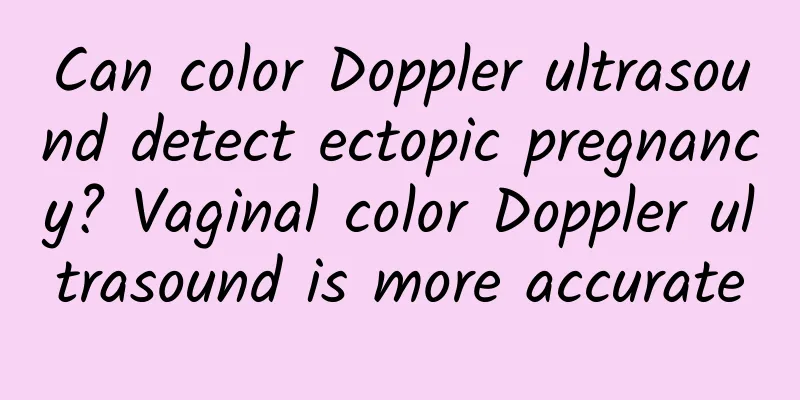What are the examination methods for intrauterine adhesions? A pathological phenomenon

|
Intrauterine adhesion refers to a pathological phenomenon in which the endometrial basal tissue of the uterine cavity is damaged due to excessive curettage during artificial abortion, bleeding during spontaneous abortion, residual curettage after delivery, or infection by pathogens such as bacterial tuberculosis, resulting in partial or complete adhesion of the endometrium. Menstrual abnormalities such as amenorrhea and dysmenorrhea caused by partial or complete adhesion of the uterine cavity are also common causes of infertility or recurrent miscarriage. If you want to know whether it is intrauterine adhesion, you must conduct relevant examinations. So, what are the examination methods for intrauterine adhesion? Examination of intrauterine adhesions 1. Use iodized oil contrast examination. During the examination, there will be one or more filling defect shadows with clear outlines, sharp edges, and irregular shapes in the uterine cavity, and the shadows will not change due to the pressure of the contrast agent. |
<<: What are the symptoms of intrauterine adhesions? Pay attention to timely treatment
>>: Do virgins have leucorrhea? It doesn't matter much
Recommend
What department should I go to for B-ultrasound of uterine fibroids?
What department should I go to for B-ultrasound o...
What are the measures to prevent cervical hypertrophy?
In life, many women are prone to different degree...
What symptoms can be relieved by massaging Taixi acupoint? Heel pain, dysmenorrhea, etc.
The Taixi acupoint is located in the depression b...
What should I eat to soften my cervical hypertrophy?
Cervical hypertrophy can be softened by dietary a...
What medicine is good for left adnexitis?
Treatment of left adnexitis requires the selectio...
Dysfunctional uterine bleeding during menopause
Dysfunctional uterine bleeding during menopause r...
What are the symptoms of uterine fibroids? How to treat uterine fibroids with minimal harm
Uterine fibroids are a gynecological disease and ...
How is vaginal candidal infection transmitted?
Vaginal candidiasis is a common disease of vagini...
What are the symptoms of uterine fibroids? Can uterine fibroids cause infertility and miscarriage?
Uterine fibroids are the most common benign tumor...
What medicine should I take to treat cervical warts?
In daily life, cervical warts are a common diseas...
Does uterine fibroid surgery affect pregnancy? What should I pay attention to after uterine fibroid surgery?
Uterine fibroids are a common gynecological disea...
3C charging disrupts sleep, causes metabolic disorders, and may make you fat and ugly
Do you charge your phone on your bed or bedside b...
What to do if your abdomen is bloated after abortion
Many women are not suitable for pregnancy for var...
Is uterine fibroid a benign tumor? Hysterectomy may be performed depending on the situation
The formation of uterine fibroids is often relate...
How is a woman with two vaginas and two uteruses different from a normal woman? Do all the babies she gives birth to twins?
"Doctor, I recently found out during a physi...









